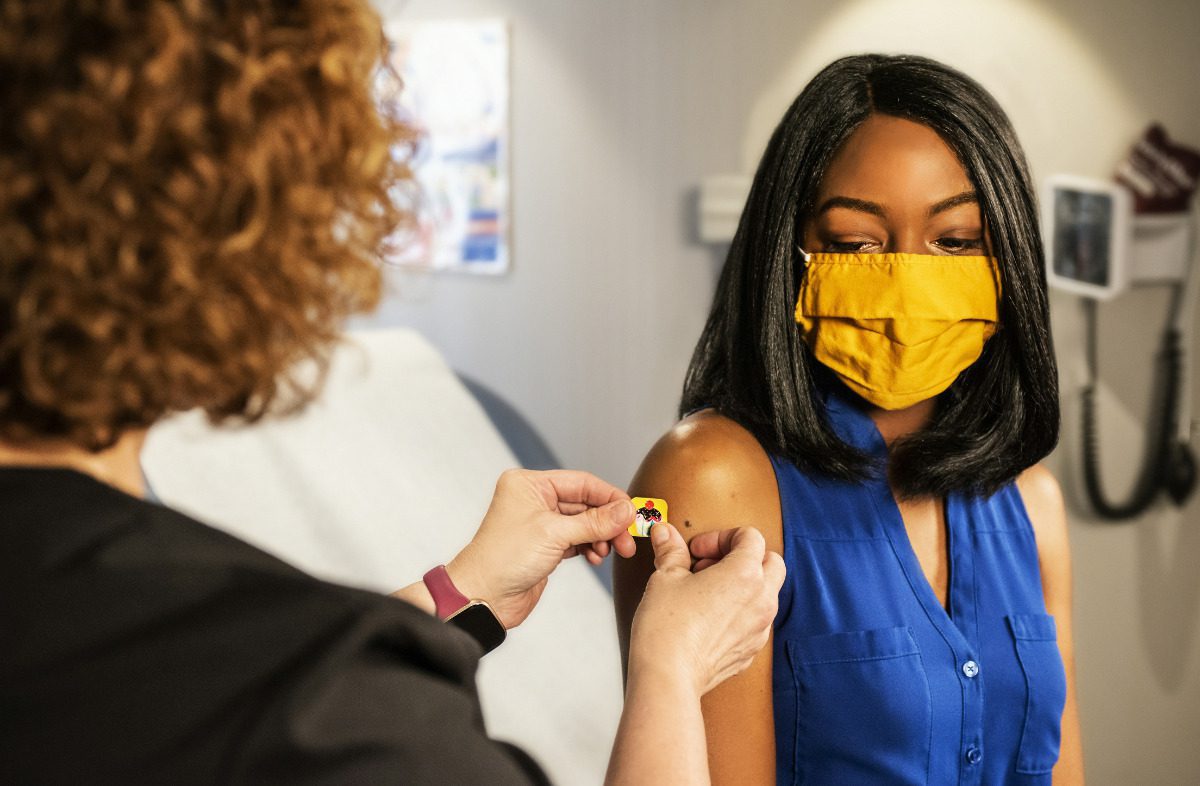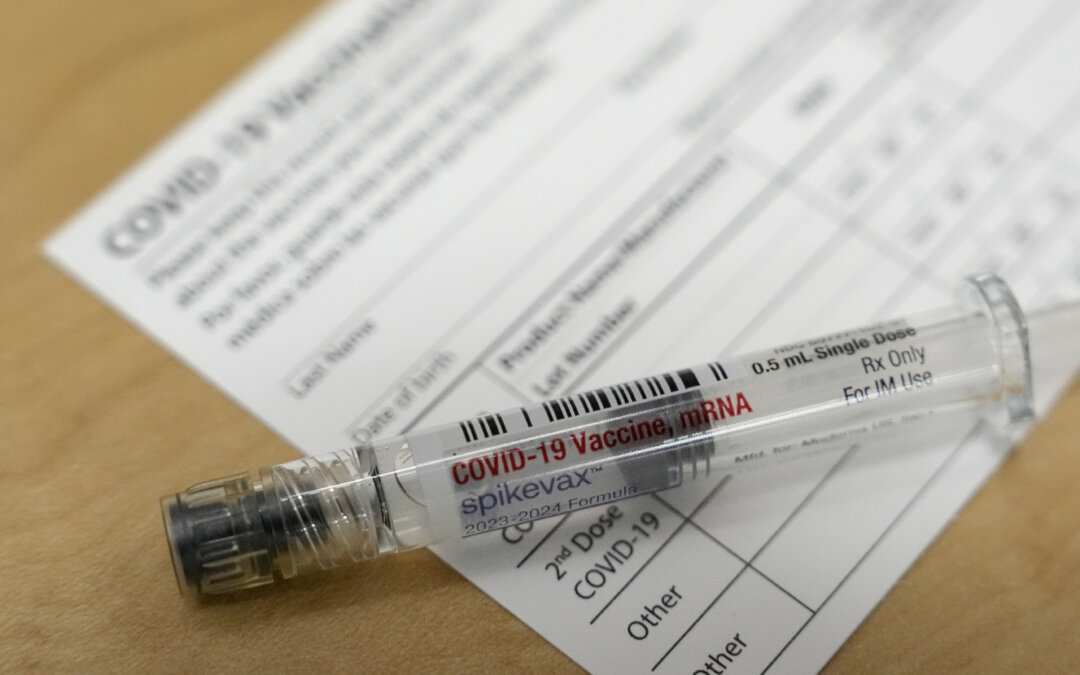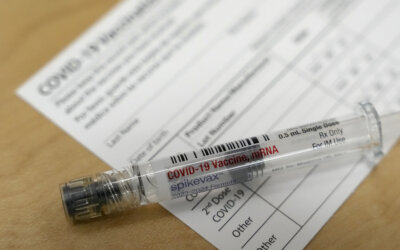
Fall is coming, which not only means cooler temps and blazing leaves, but also an uptick in coughs and sniffles, and every parent’s favorite game: Is it COVID, flu, or RSV?
RSV (or respiratory syncytial virus) is a common, highly contagious respiratory virus that causes mild, cold-like symptoms, but can be dangerous for young children and elderly adults. The FDA approved the first RSV vaccine last year, which the CDC recommends for all adults 75 years and older, and anyone between the ages of 60 to 74 with an increased risk of severe RSV disease.
“Unlike the COVID-19 and flu shots,” epidemiologist Annette Regan wrote for The Conversation, “additional RSV doses are not currently recommended, because research suggests that the vaccine offers protection for at least two RSV seasons.”
But when it comes to protection against flu and COVID, updated shots are necessary to tackle the latest strains of each. Thankfully, both are now available.
Wondering when to get yours? Here’s everything you need to know about getting the latest flu and COVID vaccines.
The latest vaccines
The FDA has approved three new COVID-19 boosters that target recent strains of the virus and the variants most likely to appear during winter months. Shots from US manufacturers Pfizer and Moderna are already available. Novavax, a third US manufacturer, expects its latest vaccine version to be available a bit later.
“Moderna and Pfizer both made updated formulations of the COVID-19 shot that target this new KP.2 variant,” Regan said. “This strain was selected because it was the most common variant at the time the choice was made.”
As for this year’s flu shots, those are trivalent, meaning they protect against three flu viruses: two versions of influenza A and one type of influenza B. These versions are the ones health officials expect to see most readily.
Who should get a vaccine?
According to the CDC’s latest health guidance, anyone 6 months and older should get the new booster. The agency places particular emphasis on older adults, people with weakened immune systems, pregnant women, and those in long-term care facilities.
The CDC also recommends everyone 6 months and older receive a flu shot, which can be done at the same time you opt for your COVID vaccine. Officials note you should try to get these vaccines when you have a few days of down time afterward, as the first days following vaccination can come with fatigue, lethargy, and soreness.
Because it takes around two weeks for the vaccine to become fully effective, officials also recommend you factor that into your decision of when to get vaccinated (i.e., don’t get them the night before a large social gathering).
When should I get vaccinated?
Over time, vaccine protection wanes, which is why it’s important to stay up-to-date on shots.
If you’ve recently had COVID, officials say you should consider waiting three months before getting the booster, but you can get it sooner than that if you’re at high risk. High risk individuals should schedule vaccinations once they’re available.
However, the CDC says anyone who recently had COVID can wait three months after recovery before getting vaccinated, until that immunity begins to wane.
According to the CDC, people who contract COVID and don’t get vaccinated after their recovery are more likely to get the virus again.
Although most people need one dose of the vaccine, children up to 8 who haven’t been vaccinated for flu before should get two shots at least four weeks apart. The CDC recommends that unvaccinated children get their first shot right away.
Because adults ages 65 and up have the highest risk of severe illness from flu, they should ask for certain shots that produce a stronger immune response than a standard flu vaccine. The CDC recommends three options for this age group: Fluzone High-Dose, Flublok or Fluad. The first two are high-dose vaccines, meaning they contain a greater amount of antigen, an ingredient that triggers an immune response. Fluad, meanwhile, contains an ingredient that helps boost the immune response, called an adjuvant.
Getting the shots at once might also slightly increase side effects, according to a CDC study, though the reactions are still generally mild. “It’s important to remember that vaccines do not offer immediate protection,” Regan said. “You need about two weeks for your body to generate enough antibodies to offer protection. September or early October is a good time to get the flu shot to ensure you are protected in time.
How much will the vaccines cost?
Flu vaccines can range from $25 to more than $100, depending on your insurance. Most health insurance plans cover annual flu shots, including Medicare, Medicaid, and the Affordable Care Act. Similarly, many county health departments offer the flu shot for free during flu season.
As for the COVID vaccine, it’s no longer available to uninsured folks for free because federal funding for a program which provided free vaccines, the Bridge Access Program, ended in August.
However, the CDC announced that it is distributing $62 million to state and local health departments to provide free COVID vaccines to the uninsured, so they should be available in some states.
Most folks with private insurance, Medicare, or Medicaid will be able to receive the COVID vaccine without incurring costs, but adults without insurance (or whose insurance doesn’t cover the vaccine) could pay around $200.
Where do I find the vaccines?
Major pharmacies like CVS and Walgreens are offering both COVID and flu vaccines. Another helpful option? This website, where the federal government lists pharmacies with COVID vaccine availability based on your zip code.

With health care tax credits set to expire, pain sets in for one New Hampshire business
By William Skipworth / New Hampshire Bulletin Last week, W.H. Bagshaw, a metal parts manufacturer based in Hudson, found out that its health...

A new car vs. health insurance? Average family job-based coverage hits $27K
By Phil Galewitz, KFF Health News With the federal shutdown entering its fourth week, spurred by a stalemate over the cost of health insurance for...

NH Dems blast ‘reckless’ GOP shutdown, warn of rising health costs for Granite Staters
Speakers warned that a dual-income couple could face a nearly $15,000 increase in costs if Affordable Care Act tax credits expire. Democratic...

We asked, you answered: What do you think about the president’s claims that taking Tylenol while pregnant causes autism?
A version of this story appeared in the Granite Post's newsletter. Subscribe here. President Donald Trump announced Monday, Sept. 22 that the Food...

Fighting a health insurance denial? Here are 7 tips to help
By: Lauren Sausser When Sally Nix found out that her health insurance company wouldn’t pay for an expensive, doctor-recommended treatment to ease...

Health officials from 10 Northeast states officially band together. New Hampshire remains out.
By William Skipworth/ New Hampshire Bulletin This story was updated Sept. 19 to add a statement from a U.S. Department of Health and Human Services...




